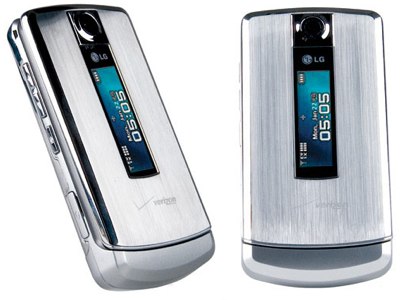*Photo from iTech News Net (itechnews.net), LG 8700 Review
In my opinion, Industrial Design is one of the most difficult focuses in design; I feel there are more constraints for industrial design. While the laws of physics and other sciences apply to every field within design, industrial design is especially restricted. For a couple examples, a chair cannot collapse under the weight of a person and cooking utensils cannot melt at common cooking temperatures. The picture above shows a cell phone I used to own, the LG 8700 made for Verizon Wireless. I really liked the phone and the majority of people complemented its aesthetic design. The only comment that wasn't a straight compliment was, "It kind of looks like a refrigerator." However, even that comment didn't have a negative connotation. The truth is, the phone was poorly designed. Let me explain.
Probably the two most prominent elements of the phone would be the texture and the shape. The exterior of the phone is constructed out of stainless steel. In an optical sense, the texture is sleek and the vertical fibers provide the sense of metal rather than plastic, which typically is associated with higher quality. When looking at the haptic, or actual, texture, the sensation of metal is all the more prominent. The phone, while idle, was cool to the touch. The shape of the phone suggests convenience. It is small enough to use with one hand, it can be stored in a variety of places, and it isn’t a nuisance to carry around. Additionally, strong linear lines appeal to us.
Aesthetically, the design was nearly flawless. However, when it came to functionality, there was at least one serious issue. Consider the exterior; it was made of stainless steel, which absorbs temperatures very easily. Idle, the phone was cool, when in use, the phone would heat up… considerably. The phone would get so hot that it would eventually fry its own Bluetooth mechanism. Here is an example of poor design: the item caused damage to itself. It took me a while to discover this unfortunate flaw. While I had the phone, California introduced a new law banning the use of cell phones without headsets while driving. This law forced me to get a new cell phone that was capable of operating a Bluetooth headset. Now, whenever I think about industrial design, I think about this phone and consider all the concerns these designers must face. Industrial designers must know how to design aesthetically, while at the same time understand mechanics, science, and all other physical elements they may encounter.






















